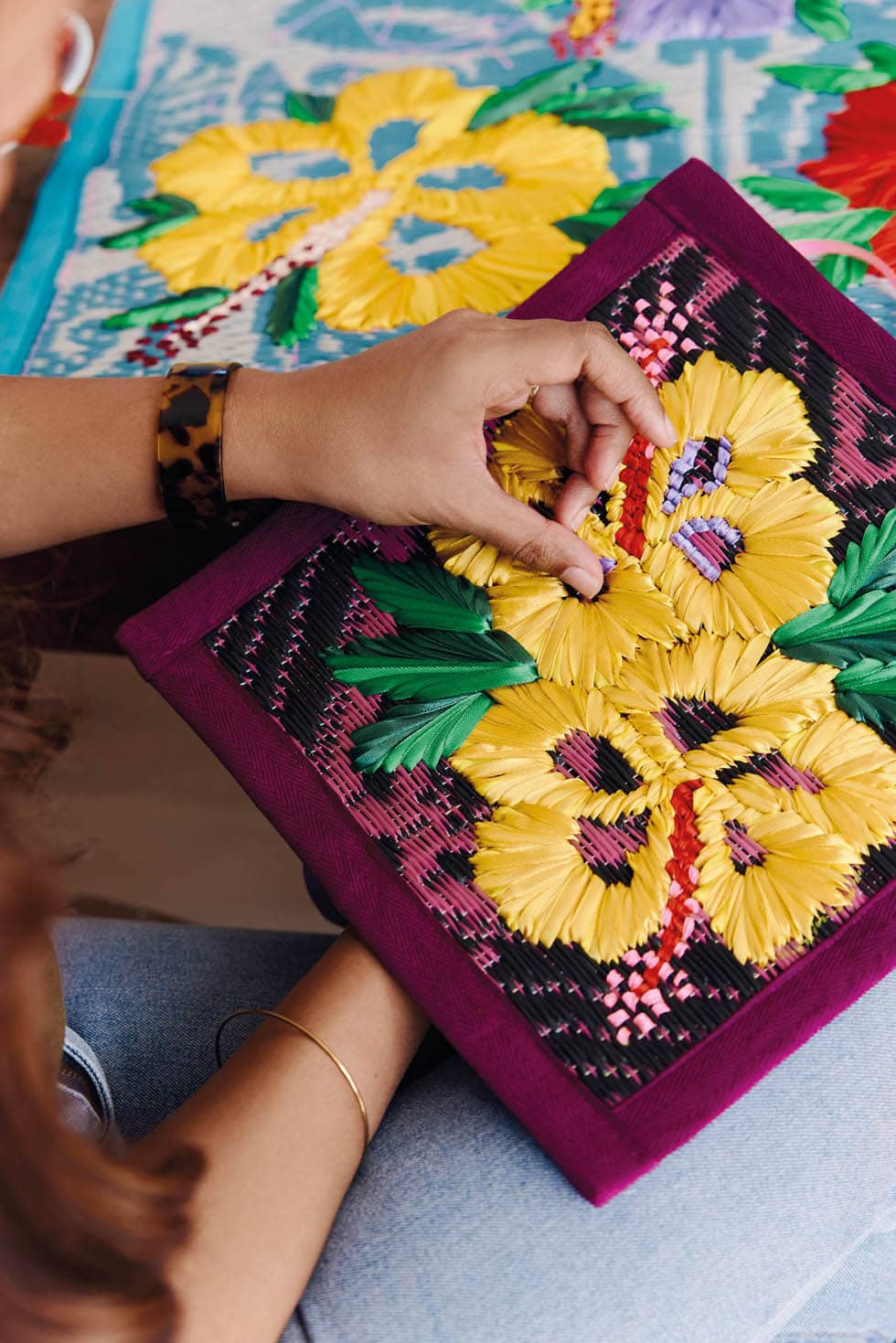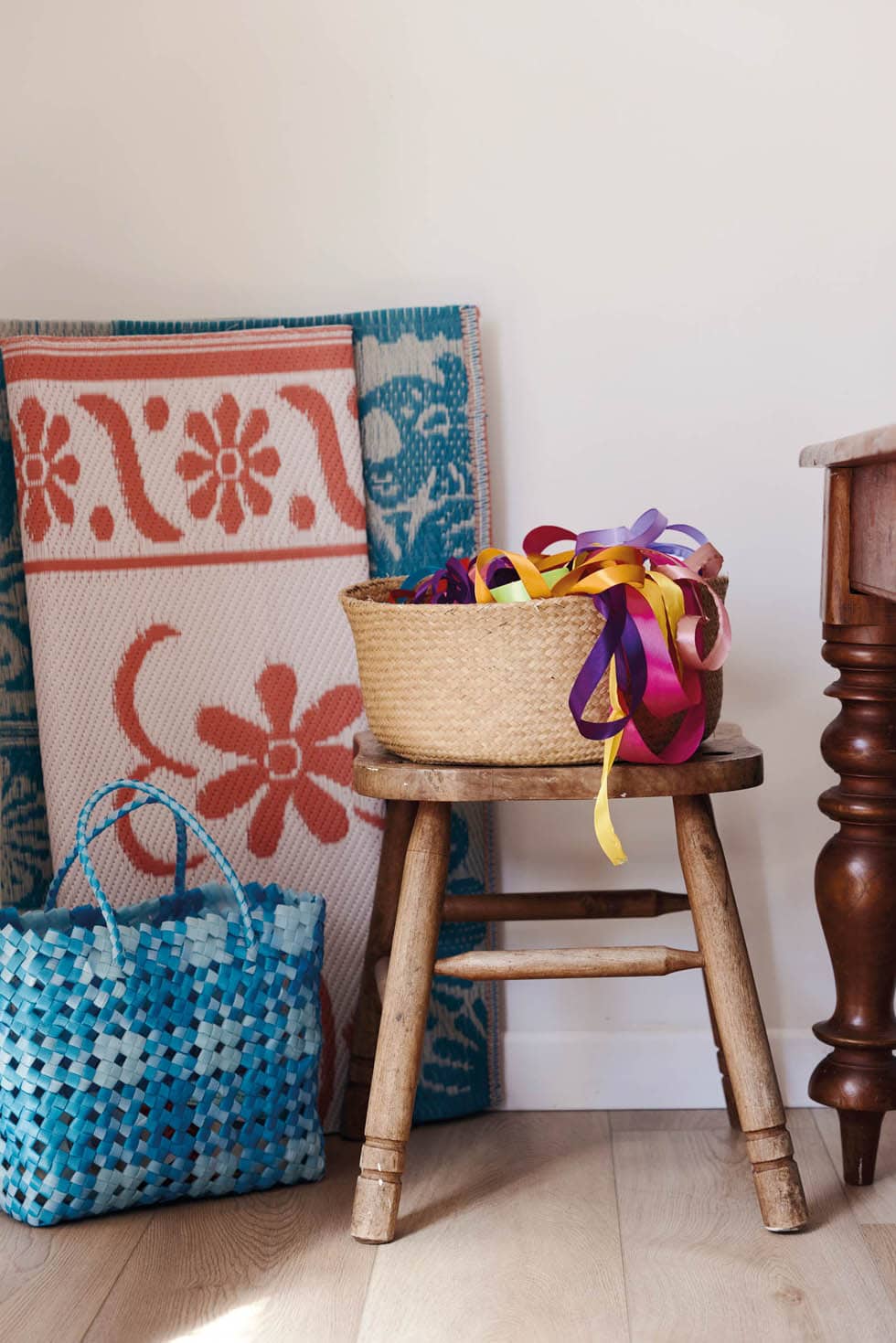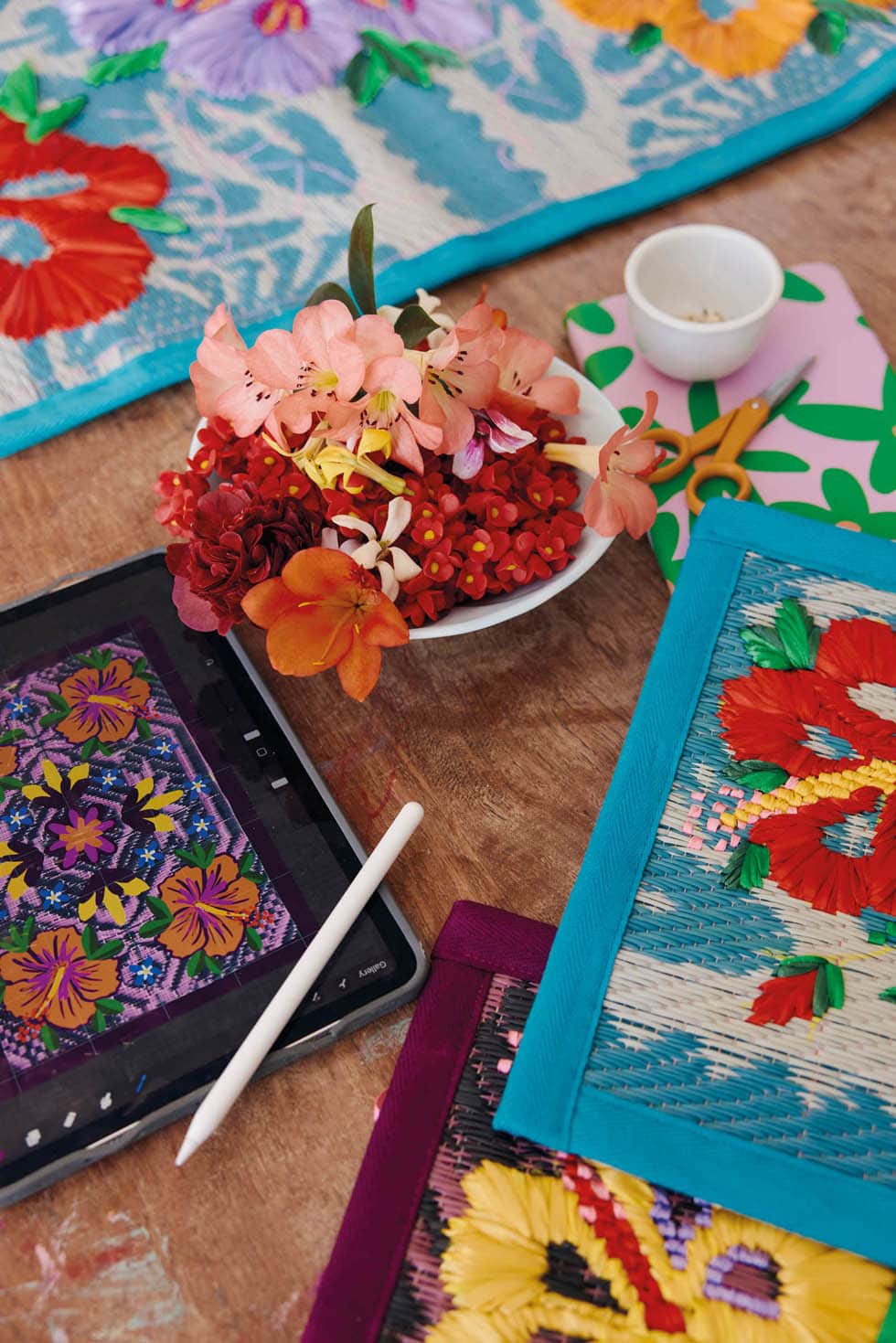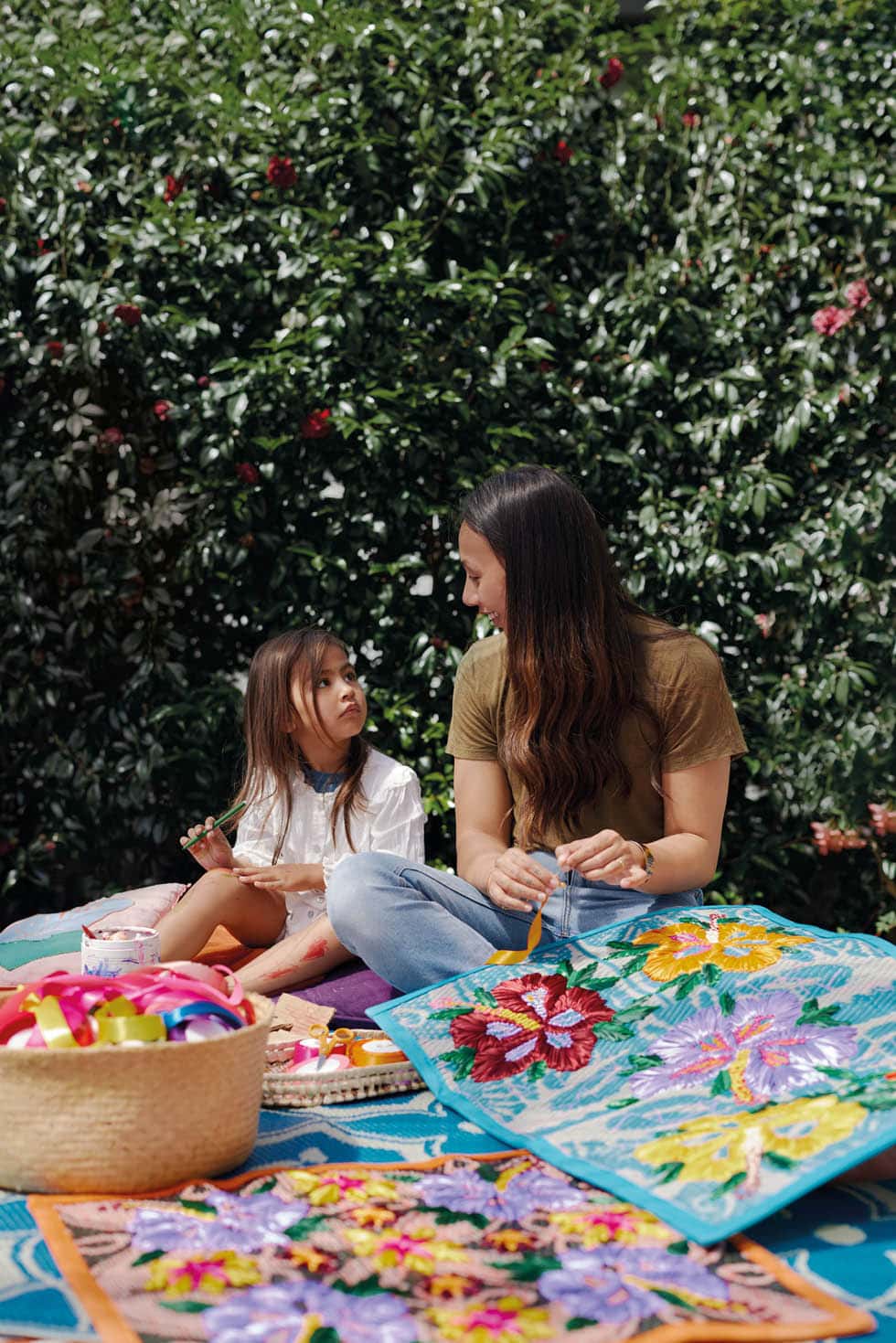Creativity has been a constant in New Zealand-born Samoan/Rotuman/Tongan/Irish artist Serene Hodgman’s life, its meaning morphing over the years. As a child, she recalls it being a skill she and her cousins learned to keep them out of the kitchen when formal events were on, or at their nana’s (they once made a supermarket check-out conveyor belt from her ironing board and an ‘ie lavalava, which they pulled along the board with pantry food on it while using the iron as a barcode scanner). As she grew older, the Elam School of Fine Arts alum remembers being at her happiest when making something with her hands, including sewing clothing for her family.

Serene, you spent a lot of your childhood in Tāmaki Makaurau/Auckland with your grandparents — how has your relationship with them influenced your practice? I’m so grateful for the relationships I’ve been able to have with my grandparents. If it wasn’t for them and the sacrifices they made to immigrate here from Samoa, I wouldn’t be here with the life I have. I try never to forget that, and see every opportunity I get within my practice as a way to honour them.
I think they influenced my creative confidence quite young. I remember my nana finding a space for every piece of art that my cousins and I made at school on their already overcrowded bedroom walls. That was a really empowering and encouraging thing for me as a kid — seeing my work on their walls was like a big commission.
My grandpa also used to be a carpenter, so I loved making my tech projects for him. He’d always have the most heartwarming responses that spurred in me a deep love of making things for the people I care about. Today, I feel privileged when people ask me to make a piece for a loved one. They share stories about them and how much they mean to them, and I get to put all that love into my work.


What is it about the art of mat making, referencing tivaevae [Cook Islands embroidery], ‘ie toga [finely woven Samoan mats] and koloa [customary Tongan women’s textile art], that you’re drawn to? I see myself in these ways of making and the Moana women who make them. Aunties, mothers and nanas all make these measina/cultural treasures and taonga for loved ones. That’s special to me because they hold our Pasifika stories. There’s also so much that goes on while this making takes place — conversations, songs, venting, healing, sharing, listening, thinking and daydreaming as hands work their own rhythms and patterns.
You put a modern spin on tradition by using contemporary, accessible materials — how have you made the practice your own? Traditionally, Samoan ‘ie toga are made from pandanus leaves that are picked, dried and sometimes coloured with natural dyes from flowers. I use ready-made synthetic mats that are imported from Asia and available at emporium stores, a staple substitute in Pasifika homes.
In my final year at Elam,I began playing with the negative stereotype of being a ‘plastic Samoan’ — a Samoan who isn’t fluent in the language or culture — by using plastic materials to lalaga/weave text and phrases into them, and over the past 10 years, these plastic mats have evolved to be my canvas. I’ve been experimenting with ways to make smaller works from larger mats, and using them to tell stories through floral patterns and text.
For me, these mats represent materials that have been local to me growing up as a New Zealand-born Samoan. They’re not made in the traditional way that Samoan ‘ie toga are, but they’re worked into in a way that feels natural to me.



The colours you use are eye-catching — what informs your palette? My practice has picked up a lot more momentum since I’ve become a stay-at-home mum of three, and a lot of the colour combinations come from the kids’ toys and books that surround me. I often don’t even realise it until I’ve finished a piece, and then I’ll notice the baby walker looks strangely familiar for some reason.
I work around my kids a lot and try to involve them in parts of the process, like sketching with the projector or choosing coloured ribbons at the shop. It makes sense to me to involve them because their creativity needs to be nurtured too. I used to try to do a lot of my creating once they went to bed at night, but then viruses and teething and all the beautiful phases young kids go through really humbled me and my creative moods, so now I just make the most of any moment during the day in which I can create. A lady at an opening night once said to me, ‘Why wait for them to fall asleep? You have to try to make while they’re awake or they’ll miss seeing what you can do’, so as tricky as that can be sometimes, I try to keep that advice in mind.


Can you talk us through your process? It usually starts with finding a good mat. I look at the colours and patterns, then inspect the weave to see if it’s even and strong enough to be worked into. If I’m working on a commission for someone, I ask if they have any flowers with special meaning in mind before I start sketching on my iPad. Every piece I make begins with a detailed sketch that helps me plan what kind of stitches are needed for the different elements. Alternating different kinds of stitches to accentuate different parts of a flower is important for visual balance.
Where are some of the places in which people can see your work? Thanks to Whau the People Charitable Trust, I have an exhibition of works in the form of six flags that’ll be up until January [2024] along the NL2A shared path that runs from New Lynn to Avondale. There will also be a 1000-piece puzzle depicting a work of mine that’s been acquired by the Auckland War Memorial Museum available in the museum store over summer.
@serenehodgman
Interview Alice Lines
Photography Holly Sarah Burgess

